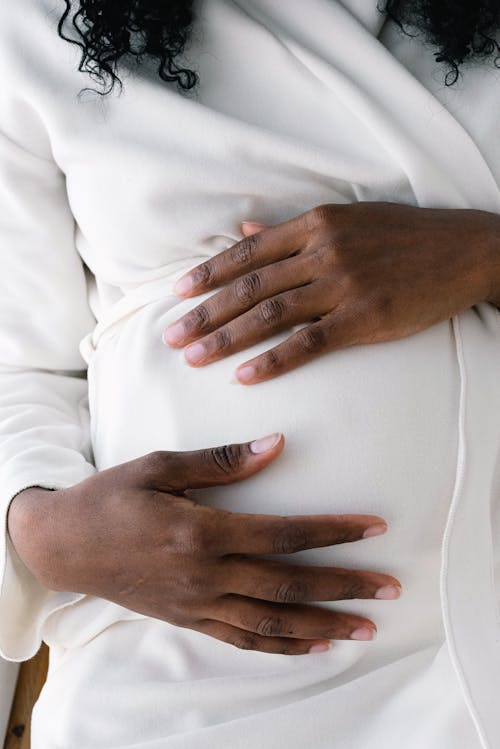Having a baby is a miracle and one that every woman yearns or aspires to become pregnant. However, despite the expectations of motherhood, it’s as though your baby bump puts your body through a meat grinder. There’s bloating, weight gain, and loss, but what do breast implants look like after pregnancy?
Being pregnant won’t affect your implant’s integrity, but your breasts will change in composition and look. Afterward, whether you’re breastfeeding or not, milk glands engorge, stretching your breast’s shape. While your plastic surgery remains stable, larger cup sizes may experience ptosis or breast sagging.
If you’re not happy with the appearance of your breasts after delivering a baby, you can consider corrective procedures. While these boob job revisions aren’t necessary for everyone, you’ll need to give your body time to rest and possibly complete breastfeeding. Here’s a quick breakdown of what to expect of breast implants after pregnancy.
Does Pregnancy Have an Impact on My Breast Implants?
Apart from an extended belly, you’ll experience enlarged breasts during and after pregnancy. Progesterone and estrogen hormone levels cause weight fluctuations, and mammary glands engorge with milk. If you’ve had aesthetic augmentation, these changes leave unanswered questions. The cup size increase causes postpartum deflation, but your implants stay the same.

It’s the weight gain and the rate of gaining that leave a residual effect on your breast augmentation. Normal hormonal changes cause your boobs to grow, and the skin stretched by implants will cause sagging when milk production subsides. Your glandular tissue, as well as, the skin shrinks to reduce your cup size somewhat to prenatal levels.
Therefore, there’s no difference in postpartum sagging whether you have breast implants or don’t. Factors that play roles in changes on your breasts after pregnancy include;
- Weight gain during pregnancy
- Genetic traits like large breasts or body size
- The length of time breastfeeding
- Number of pregnancies
Can I Breastfeed After Pregnancy with Breast Implants?
Nursing is perfectly possible too, and you’ll retain sensation all around the silicone. Breasts will become larger than during pregnancy, although that doesn’t increase the risk of sagging. With most boob augmentation, implants are placed underneath the breast tissue, next to your chest muscles. As such, there’s no interference with mammary gland or duct functions.
Your body will produce milk normally as though you didn’t have a boob job, and you’ll breastfeed normally postpartum. However, it’s sometimes dependent on how the surgery was done. Implants placed under glandular tissue may impact milk production, but it’s rare.
Your milk ducts can severe if an incision is placed across your areolae or the dark parts beneath your nipples. Loss of sensation from nerve damage during the procedure will give rise to some problems during nursing.
The reason you had implants in the first place may hinder nursing more than the augmentation itself. Boob job or not, the milk-producing glandular tissue is encumbered by low development, or being tuberous in shape. Your breasts milk glands could also be spaced out too far apart or asymmetrical, affecting lactation.
What Can I Do to Return My Augmented Breast Size to Pre-Pregnancy Levels?
Sensation in your breasts postpartum is essential if you’re breastfeeding. The nerves on your nipple and glandular tissue trigger the release of prolactin and oxytocin hormones. These cause milk production and subsequent letdown. While the research is limited, no evidence of babies affected by the silicone in implants has been recorded.

Several procedures, including a breast lift or mastopexy surgery, can restore your pre-pregnancy cup size and look. That’s also true whether you’ve been pregnant or not, as 20% of boob job recipients get theirs replaced in about ten years. Shapes, sizes, and positions of breasts can change with time, and that in turn affect implant integrity.
You can replace your implants with a different size, or another type to restore their shape after pregnancy. The plastic surgeon reduces the appearance of sagging by centering the glandular tissue on your implant. Revision surgery can also involve boob reduction as a way to achieve your desired results.
Are There Risks of Having Breast Implants Too Long?
Ultimately, it’ll be up to you when to get implants, either before or after pregnancy. Your health history, priorities, and goals in life will be decisive factors in this personal decision. Both scenarios come with their possibilities, as also do breast lifts postpartum, which achieve great results.
Breast implants are designed to last long, but not forever. Adjective, corrective, or removal surgery procedures will be essential at some point, possibly after pregnancy. Other factors that would lead to a boob job revision include if the implant moves or leaks and become ruptured.
Such are the risks of any breast implants, whether you’re pregnant, have delivered, or are breastfeeding. It’s essential to have constant checks as an implant can rupture and then leak slowly. Capsular contracture or scar formations inside breast tissue can also cause the silicone to change shape, become mobile, more visible, and painful.
If textures silicone implants are left in too long, rare complications occur including shortness of breath and chest pains. There’s also been evidence of a blood cell cancer called anaplastic large cell lymphoma, which results from old boob jobs.
When Should I Consider Breast Implant Adjustment, Replacement, or Removal?
After pregnancy, you may consider having a breast implant inspection to determine if issues need correcting. You can have your breasts lifted if hormonal changes have impacted size or left you with postpartum sagging.
Other instances when such procedures can be undertaken include;
Change of Activity Levels
Taking part in intense cardio workouts like Bootcamp of CrossFit can leave you desiring a leaner, toned physique. You can have your implants removed or replaced with a smaller size if your significant boob job gets in the way of your activity levels.
Keeping Up with Modern Trends
Today, there’s more desire for Brazilian butt lifts than that for large boob jobs. While breast augmentation is still very popular, many augmentation recipients chase after a C cup rather than a DD. Many are cases of women downsizing or having implants removed altogether.
Discomfort or Illness
Have your breast implants removed if they feel hard or painful. That can happen after years of being put in. A broad range of health issues could also disappear once a boob job reversal has been done.
A More Natural Look
Breast implant recipients have opted for mid-size implants or removal if it resulted in an overly rounded look. Many slender women have had their boob jobs reversed or downsized to suit their frame and eliminate looking too artificial.
Conclusion
Every woman is different, and no two pregnancies are identical. If you’ve had a previous pregnancy, you’ll know that your body reacts differently with each child. You may gain weight either slowly or quickly, and your breasts will enlarge and then deflate postpartum.
Taking it slow will improve the chances of your breast implants looking great after pregnancy. Your body response, especially when breastfeeding will determine whether you get a breast lift procedure or not. More often, your boobs will shrink back without sagging, although you’ll ultimately require implant inspection, adjustment, or replacement as time goes by.

I’m Cathrine and I’m a 39-year-old mother of 3 from Utica, New York. And I’m extremely happy you’ve come to visit my hide-out on the web. Here I post about everything related to family-life and usually it will involve babies and lessons I’ve learned over the years from experts, friends, and my own mistakes. So hopefully you will find what i write fun and informational!


